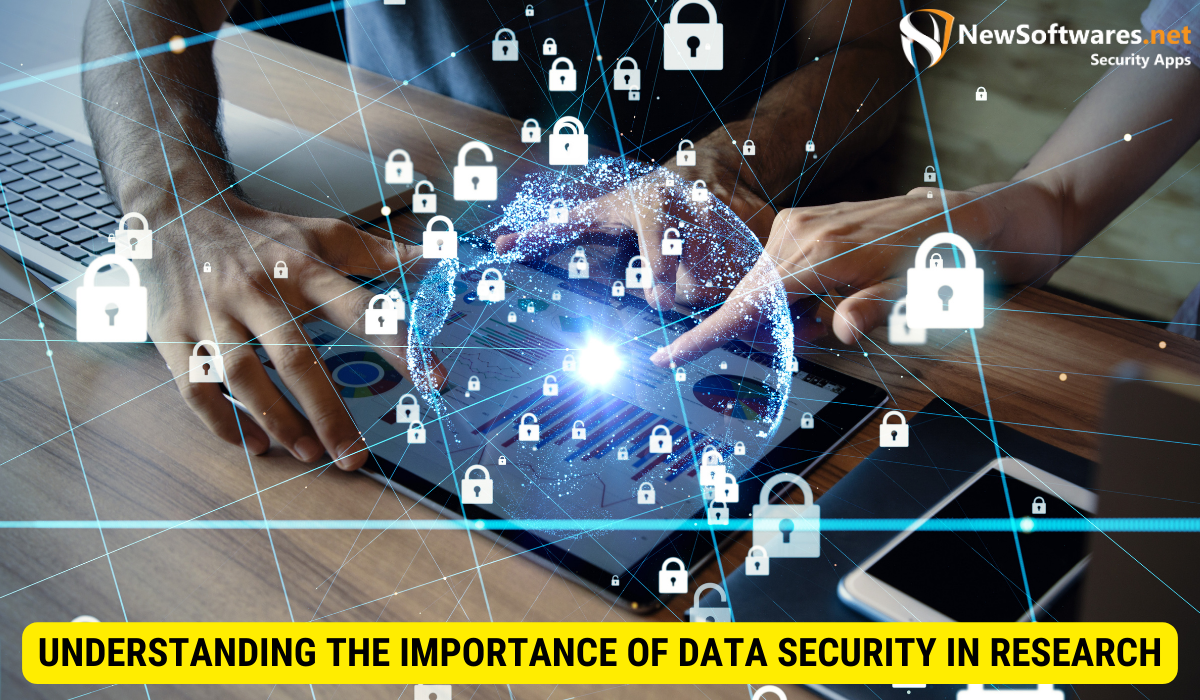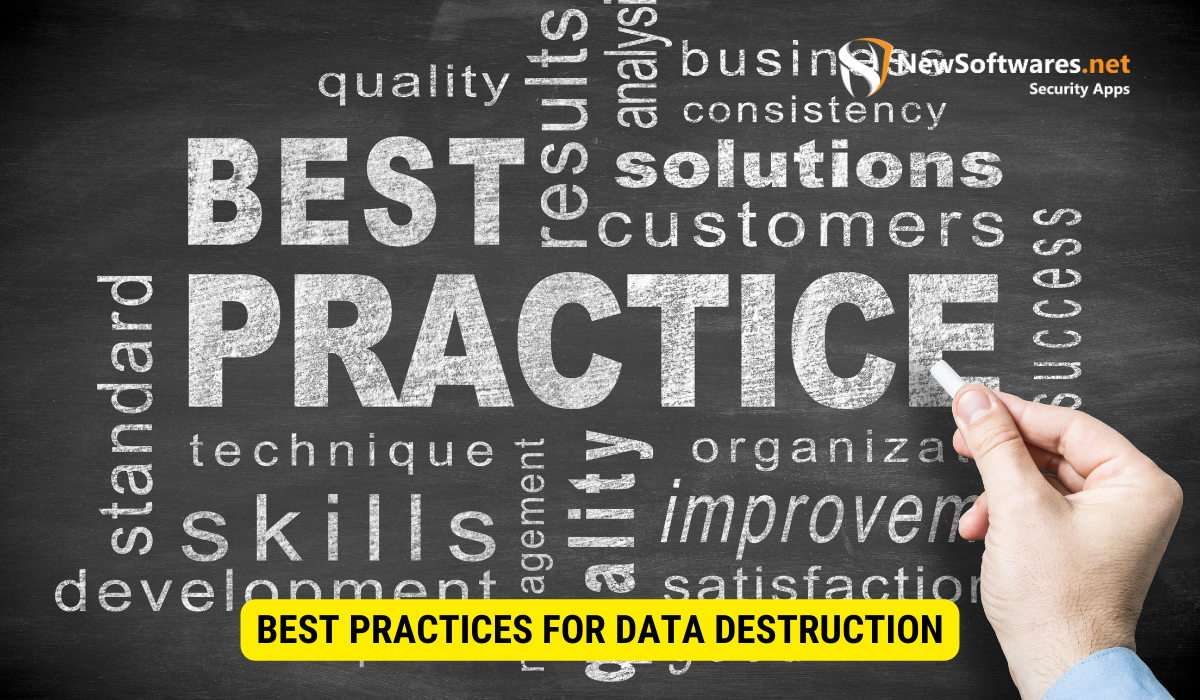To secure and destroy data for research, follow these steps:
-
Implement data encryption techniques.
-
Establish strong access controls.
-
Regularly back up research data.
-
Follow best practices for data destruction, including choosing appropriate methods and verifying successful destruction.
-
Ensure legal and ethical compliance in data security and destruction processes.
Data security has become a paramount concern for researchers in the digital age. The value and sensitivity of research data necessitate tough measures to protect it from unauthorized access and potential loss. Moreover, data destruction is equally important to ensure that sensitive information does not get into the wrong hands. Together, we will delve into the various aspects of data security and destruction in research, providing valuable insights and practical guidelines for researchers.
Understanding the Importance of Data Security in Research

In the realm of research, data plays a crucial role. It is the foundation on which studies are built, providing evidence and insights that drive groundbreaking discoveries. Research data encompasses a wide range of information, including raw data, experimental results, confidential surveys, and personally identifiable information (PII). The significance of data security lies in safeguarding this valuable asset from unauthorized access, theft, or tampering.
The Role of Data in Research
Data serves as the lifeblood of research endeavors. It gives researchers the raw material to draw accurate conclusions and make informed decisions. Without comprehensive and reliable data, research would lack credibility and significance. Therefore, protecting data is vital to ensure the integrity and validity of scientific findings.
Research data comes in various forms, such as quantitative data collected through surveys or experiments, qualitative data derived from interviews or observations, and even metadata that provides context and structure to the research. Each data type contributes to understanding a particular research question or problem.
For instance, data security is paramount in a medical research study when dealing with sensitive patient information. Researchers must make sure that patient data is anonymized and protected to maintain confidentiality and comply with ethical guidelines. This includes implementing secure storage systems, encryption techniques, and access controls to prevent unauthorized disclosure of personal information.
Why Data Security Matters in Research
Data security is not just a technical thing; it has extensive implications for the research community. Data security breaches can lead to harsh consequences, including compromised research projects, reputational damage, legal liabilities, and potential harm to research subjects. Consequently, researchers must prioritize implementing robust data security measures to protect their work and uphold ethical standards.
In addition to protecting the integrity of research findings, data security also plays a crucial role in fostering collaboration and trust within the scientific community. When researchers know their data is secure, they are more likely to share it with others, leading to increased collaboration and the potential for discoveries.
Moreover, data security is essential for maintaining public trust in research institutions and the scientific process. In an era where data breaches & privacy concerns are prevalent, ensuring the security of research data is crucial to demonstrate accountability and maintain the public’s confidence in the integrity of scientific research.
Researchers must also consider the long-term implications of data security. As research projects span extended periods, data must be preserved and protected for future reference and potential reanalysis. By implementing robust data security measures, researchers can ensure the longevity and accessibility of their data, allowing for further exploration and validation of research findings.
In conclusion, data safety is a critical aspect of research that goes beyond technical considerations. It is essential for protecting the integrity of scientific findings, maintaining ethical standards, fostering collaboration, and upholding public trust. Researchers must prioritize implementing robust data security measures to safeguard their work and contribute to advancing knowledge.
Essential Steps to Secure Research Data
Securing research data requires a comprehensive and multi-layered approach. Below are three essential steps that researchers should adopt to safeguard their valuable data:
Data Encryption Techniques
One of the primary defenses against data breaches is encoding. Encryption transforms raw data into an unreadable format using algorithms and keys, rendering it useless to unauthorized individuals. Researchers should employ encryption techniques to protect data at rest and during transmission.
There are various encryption algorithms available, such as Advanced Encryption Standard (AES), Rivest-Shamir-Adleman (RSA), and Data Encryption Standard (DES). Each algorithm has strengths and weaknesses, and researchers should carefully select the most appropriate one based on their specific requirements.
In addition to choosing the right encryption algorithm, researchers should also consider the key management process. This involves generating strong encryption keys, securely storing and distributing them, and regularly rotating them to minimize the risk of key compromise.
Furthermore, researchers should ensure that encryption is implemented for data stored on local devices and transmitted over networks. When transferring data, this can be achieved by using secure protocols, for instance Secure Sockets Layer (SSL) or Transport Layer Security (TLS).
Implementing Strong Access Controls
Strong access controls ensure that only authorized personnel can access sensitive research data. This entails utilizing secure authentication mechanisms, such as multi-factor authentication, and granting access privileges on a need-to-know basis.
Multi-factor authentication increases safety measures by requiring users to provide multiple forms of identification, for instance a passcode, a fingerprint scan, or a one-time verification code. This significantly reduces the threat of illegal access, even if a password is compromised.
Furthermore, researchers should regularly review and update access control policies to adapt to changing circumstances. This includes revoking access privileges for individuals who no longer require access and promptly updating access levels for new personnel or changing roles.
Another important aspect of access control is the principle of least privilege. Researchers should only grant access privileges to individuals needing it to perform their duties. This minimizes the potential for accidental or intentional data breaches caused by unauthorized access.
Regular Data Backup and Recovery Plans
Data backup and recovery plans are indispensable for research data protection. Regularly backing up data to secure and offline locations mitigate the hazard of data loss due to hardware failure, natural disasters, or cyber-attacks.
Researchers should establish a well-defined backup strategy that includes determining the frequency of backups, selecting appropriate backup media, and implementing robust backup software. It is crucial to ensure that backups are performed regularly and that the backup process is automated to minimize the chance of human error.
In addition to regular backups, researchers should also test and validate their recovery plans. This involves simulating various disaster scenarios and verifying that data can be restored efficiently. Testing the recovery process helps identify any weaknesses or gaps in the backup strategy and allows for necessary adjustments.
Moreover, researchers should consider using off-site backup locations or cloud storage services to provide additional protection. Storing backups in a private physical location or the cloud ensures that data can be recovered even during a catastrophic incident at the primary research site.
It is important to note that data backup and recovery plans should be regularly reviewed and updated to align with evolving technology and research requirements. This ensures that research data remains protected and accessible despite ever-changing threats and challenges.
Best Practices for Data Destruction

Data destruction is essential to eliminate the risk of unauthorized access to sensitive information. Researchers should follow these best practices when it comes to data destruction:
When Should Data be Destroyed?
Research data should be retained only for as long as necessary. Once the data has fulfilled its purpose, it should be promptly and securely destroyed. Researchers must familiarize themselves with data retention’s legal and regulatory requirements and ensure compliance.
Methods of Data Destruction
Various methods can be employed to effectively destroy research data. Physical destruction, such as shredding or incineration, is suitable for hardcopy documents. Techniques like disk wiping, degaussing, or physical destruction of storage devices should be considered for electronic data. It is essential to choose the most appropriate method based on the sensitivity of the data and the level of security required.
Verifying Successful Data Destruction
Verifying the successful destruction of data is crucial to ensure that no remnants remain. Researchers should implement verification processes, such as audit trails or third-party certifications, to confirm that the data destruction has been carried out effectively.
Legal and Ethical Considerations in Data Security and Destruction
Data security and destruction in research are not only technical matters but also imbued with legal and ethical dimensions. Researchers should be aware of the following aspects:
Understanding Data Protection Laws
Research institutions and organizations are subject to data protection laws and regulations, including GDPR, HIPAA, or FERPA. Researchers must familiarize themselves with these legal frameworks, ensuring compliance in data handling, storage, and destruction processes.
Ethical Guidelines for Data Handling in Research
Ethical guidelines play a critical role in preserving research participants’ and human subjects’ rights and privacy. Researchers should adhere to ethical principles, such as informed consent, anonymization, and protection of personal information, throughout the entire data lifecycle.
Future Trends in Data Security and Destruction
The field of data security and destruction is constantly evolving, driven by technological advancements and emerging threats. Here are two noteworthy trends to watch:
Emerging Technologies in Data Security
Technologies such as blockchain and homomorphic encryption hold great potential in enhancing data security for research purposes. Blockchain enables tamper-proof data storage and decentralized control, ensuring trust and transparency. Homomorphic encryption allows computations to be performed directly on encrypted data, minimizing the risk of data exposure.
The Future of Data Destruction
As research data becomes more diverse and complex, innovative data destruction methods will continue to emerge. Advancements in energy-efficient incineration, nanotechnology-based destruction, or secure data erasure algorithms will redefine the landscape of data destruction, offering more efficient and environmentally friendly solutions.
By adopting effective data security practices and adhering to ethical and legal guidelines, researchers can safeguard their valuable data and contribute confidently to the advancement of knowledge. Furthermore, staying informed about emerging data security and destruction trends will enable researchers to adapt and anticipate future challenges in this ever-evolving landscape.
Key Takeaways
- Research data security is vital for maintaining data integrity, ethical standards, and public trust.
- Researchers should employ encryption, access controls, and regular data backups to secure research data effectively.
- Data destruction should follow best practices, including choosing suitable methods, verifying destruction, and adhering to legal and ethical guidelines.
- Legal compliance with data protection laws is essential for research institutions.
- Emerging technologies like blockchain and homomorphic encryption will shape the future of data security in research.
FAQs
Why is data security important in research?
Data security is crucial to protect valuable research data from unauthorized access, maintain data integrity, and uphold ethical standards.
What encryption methods are suitable for research data protection?
Researchers can use encryption algorithms like AES, RSA, or DES to protect data at rest and in transit, considering their specific security requirements.
Why is multi-factor authentication important for access control in research data?
Multi-factor authentication adds one more layer of safety, reducing the danger of unauthorized access even if a password is compromised.
How often should research data be backed up, and why is testing the recovery process important?
Research data should be regularly backed up, and the recovery process should be tested to ensure data can be restored efficiently in case of data loss.
What legal and ethical considerations should researchers keep in mind when handling research data?
Researchers must adhere to data protection laws and ethical guidelines, such as GDPR, HIPAA, and informed consent, to ensure legal and ethical compliance.
Conclusion
In conclusion, securing and destroying research data are critical aspects of research data management. Researchers must prioritize data security to protect valuable information, maintain data integrity, and adhere to ethical and legal standards. By following best practices and staying informed about emerging trends, researchers can safeguard their data and contribute confidently to the advancement of knowledge in an ever-evolving data security landscape.
